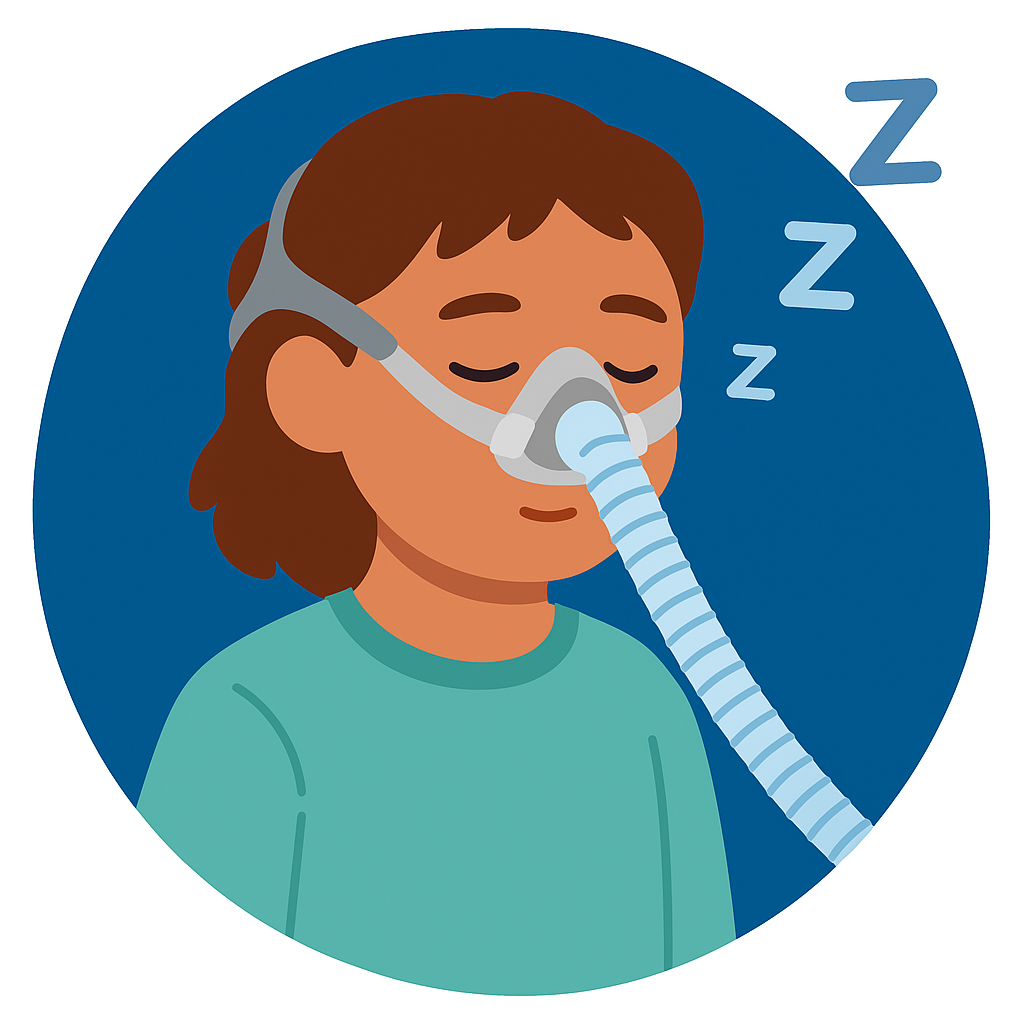Pediatric Obstructive Sleep Apnea
Pediatric Sleep Apnea is a Major Concern and More Common Than People Think!
What Parents Need to Know About Pediatric Obstructive Sleep Apnea
When most people think of sleep apnea, they picture adults who snore loudly. Did you know that children can also experience sleep apnea? Pediatric obstructive sleep apnea (OSA) is a sleep-related breathing disorder that occurs when a child's airway becomes partially or fully blocked during sleep. These pauses in breathing can affect the quality of your child's rest, their development, and even their overall health.
What is Pediatric Obstructive Sleep Apnea?
In pediatric OSA, a child's airway is blocked repeatedly during sleep. This blockage may be caused by enlarged tonsils or adenoids, extra weight, or differences in the way their jaw, tongue, or airway are shaped. When breathing pauses, oxygen levels drop, and the child's brain briefly wakes them up to restart breathing - often without the child realizing it.
Over time, this loss of oxygen and disrupted sleep can affect growth, learning, behavior, and long-term health.
Signs and Symptoms to Watch for
Because children often do not complain of poor sleep, parents should watch out for the following signs and symptoms of sleep apnea.
Snoring.
Pauses in breathing.
Restless sleep.
Snorting, gasping, coughing or choking.
Mouth breathing.
Nighttime sweating.
Bed-wetting
Get headaches in the morning.
Breathe through the mouth or have trouble breathing through the nose.
Have trouble learning and paying attention.
Do poorly in school.
Have behavior issues such as acting hyper, impulsive or aggressive.
Have poor weight gain.
Talk about feeling sleepy, or fall asleep during school or during short car or bus rides.
If your child demonstrates signs consistent with obstructive sleep apnea, it is important to talk to your doctor or a sleep specialist.
Risk Factors for Pediatric OSA
Certain children may be more likely to develop sleep apnea, including those who:
Have enlarged tonsils or adenoids
Carry extra weight or have obesity
Were born prematurely
Have conditions such as Down syndrome or craniofacial differences
Have a family history of sleep apnea
Understanding these risk factors can help families be proactive in seeking evaluation and treatment.
Why Treatment Matters: Potential Future Complications Children with Untreated Sleep Apnea Face
Untreated sleep apnea doesn't just affect sleep - it can lead to serious long-term medical and behavioral complications.
Grown problems: Poor sleep and low oxygen levels can disrupt growth hormone production.
Learning difficulties and challenges in school: Trouble concentrating, memory issues, and lower academic performance.
Behavioral concerns: Increased risk for hyperactivity, mood swings, irritability, and even ADHD-like symptoms
Cardiovascular problems: Elevated blood pressure and increased risk for heart issues later in life.
Metabolic and weight concerns: Poor sleep can make it harder for children to manage weight, increasing risk of obesity.
Mental health impacts: Higher risk of anxiety, depression, and difficulties with self-regulation.
Early detection and treatment can help prevent these complications and support your child's healthy development.
How Occupational Therapy Can Support Your Child
After diagnosis of pediatric sleep apnea, treatment may involve medical or surgical approaches - such as removing tonsils or adenoids, using a CPAP machine, or addressing weight management. Occupational therapy can play an essential role in supporting your child's health, daily routines, and overall well-being.
Promoting healthy sleep habits: Ots can help your family build consistent bedtime routines, improve your child's sleep environment, and teach calming strategies to make bedtime smoother.
Supporting treatment adherence: If your child needs to use a CPAP machine, OTs can help them adjust by practicing mask wearing, reducing sensory discomfort, and making the routine more manageable.
Lifestyle and weight management: Through fun, age-appropriate activities, OTs can support children in being more active, building strength, and making healthier choices to reduce sleep apnea symptoms.
Behavior and learning support: Since poor sleep can affect school performance and behavior, OTs can work with children on attention, self-regulation, and daily participation in school and home activities.
Family education: OTs partner with parents to help with understanding their child's diagnosis, reduce stress around bedtime and follow-through with medical recommendations.
Pediatric obstructive sleep apnea can feel overwhelming, but with the right support, your child can thrive. Recognizing the signs, seeking timely diagnosis, and building a team can make a meaningful difference in your child's sleep, health, and daily life.
At Carolina Sleep Therapy, we specialize in helping children and families navigate sleep apnea treatment with compassion and evidence-based treatment strategies. If your child has been diagnosed with sleep apnea - or you are concerned they may be showing symptoms - contact us today to schedule a consultation and learn how occupational therapy can help your child rest easier and live healthier.

